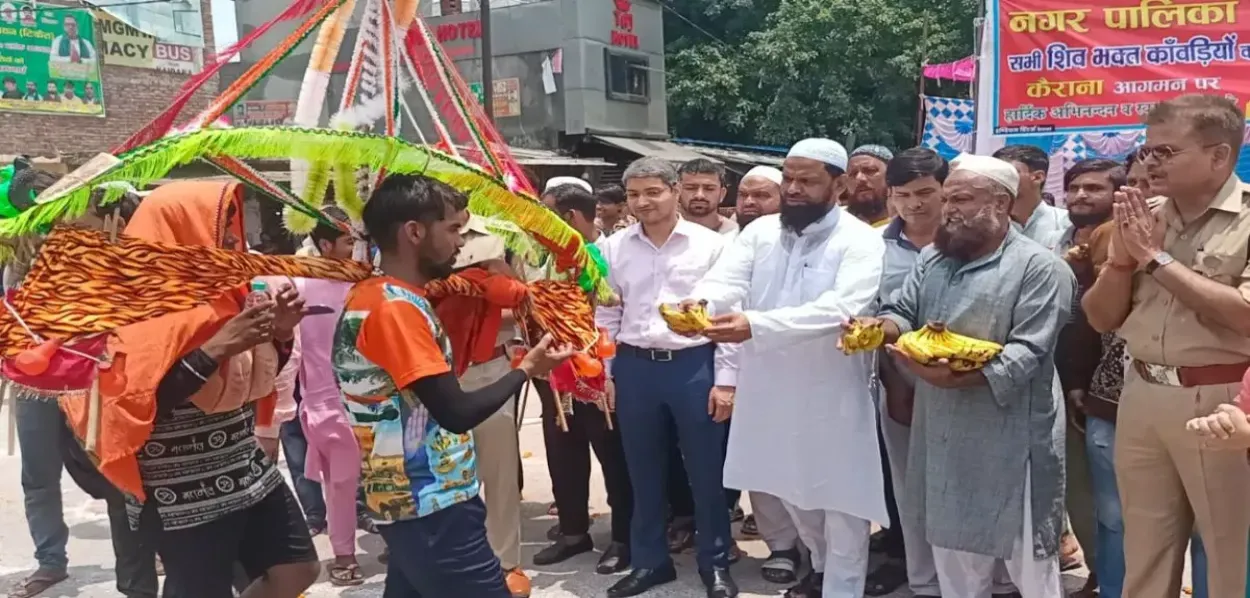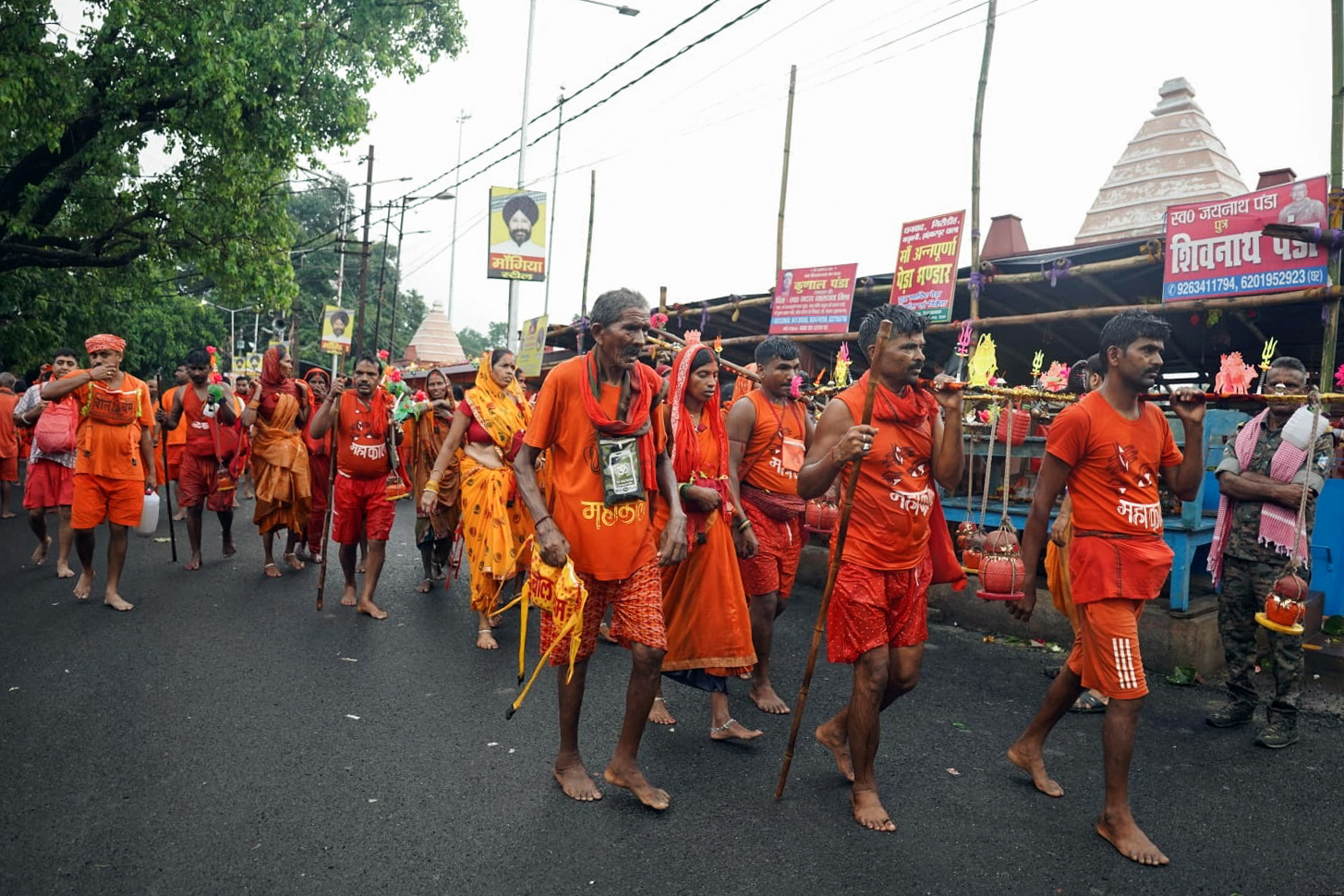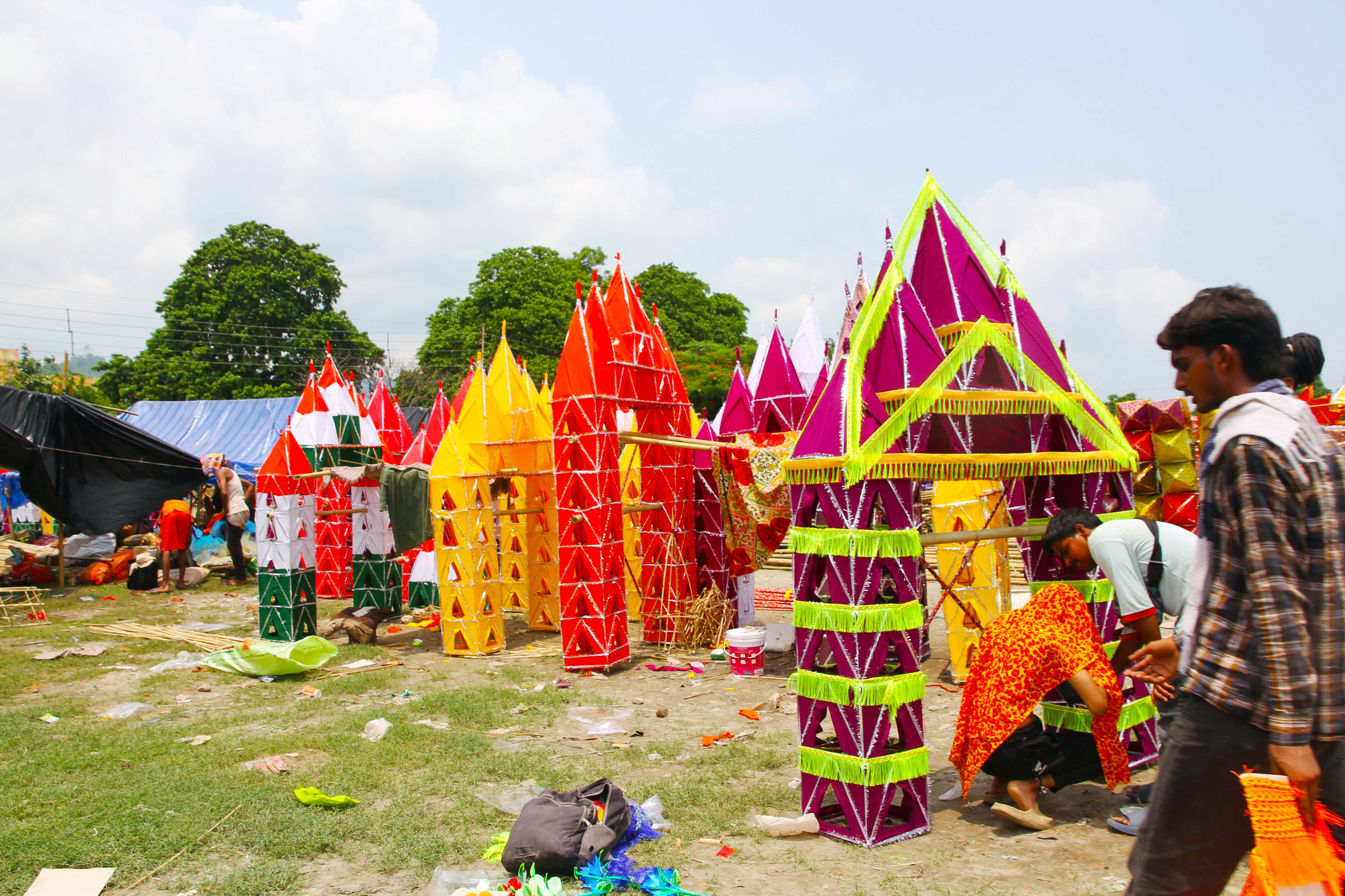
 Rizwanur Rahman
Rizwanur Rahman
India is the land of myriad religions, sects, paths, and faiths and many of these are ancient. It is home to followers of Islam, Hinduism, Buddhism, Jainism, Sikhism, and Christianity, though its majority population are Hindus and their religion is called Sanatan Dharma. Millions of followers participate in the festivals, celebrations, and rituals of these religions and faiths. Each festival and celebration is held in a specific month and season.
At present in the month of Sawan or Shravan, the biggest Hindu pilgrimage of north India the Kanwar Yatra is going on. Lakhs of Hindus undertake this pilgrimage in northern India. Although it is a Hindu pilgrimage yet the followers of other religions also participate in it by offering their services to devout.
The Kanwar Yatra is the procession of salvation and attainment of the Supreme Truth, as the purpose of life is meant to be as per Hindu religion. The pilgrims walk barefoot carrying the holy waters from a river- mostly the Ganga - to the temples of Lord Shiva located in different places. This pilgrimage is considered one of the most arduous tests of one's devotion.
 Pilgrims on Kanwar Yatra
Pilgrims on Kanwar Yatra
According to Hindu tradition, Kanwar Yatra is associated with Samudra Manthan, or the churning of the ocean of milk, as part of the war between Devtas and Asuras. The churning by serpents on whom Lord Vishnu sits, is aimed at extricating Amrit or nectar that can make humans immortal.
Instead, the churning releases poison first and the creation started burning under its impact. Lord Shiva gulped the poison to save the creation. However, the poison started telling upon Shiva’s body. Ravana, who was a devotee of Shiva (Later he abducted Sita and fought a war with Lord Ram) brought holy water from the Ganges in a Kanwar (Urn) and poured it on the Shiva Linga, a symbol of Lord Shiva in the Pura Mahadev temple. It freed Shiv from the impact of the poison.
This is how Kanwar pilgrimage started. The pilgrim carry urns of Holy water from a sacred source on their shoulders in containers suspended on either side of a pole to the Temple of Shiv to show their devotion to him for saving creation.
The procession derives its name from an urn used for carrying the holy water while the source of the water is often the Ganges River. However, since Hindus consider River as holy the water can also be sourced from other river.
 Pilgrims cooking food on the banks of Ganga in Haridwar
Pilgrims cooking food on the banks of Ganga in Haridwar
The offering is dedicated to the God Shiva who is also referred to as Bhola (the innocent) or Bholi Baba (the innocent saint). The Kanwar pilgrimage existed in the early 19th century, as English travelers recorded sightings of Kanwars at various places during their journeys in the plains of northern India. Also references to them are found in literature published in England at the time. In modern times, the practice of carrying a kanwar as part of a religious ritual by devotees of Shiva has become widespread throughout India.
This journey starts from different places but Haridwar, Gomukh, and Gangotri are the major starting points of this journey. Devotees collect the holy water of the Ganges from these locations and travel to various Shiva temples. The major routes include Haridwar which is the most popular route among the devotees.
Devotees, men and women of all ages in saffron-colored clothes, mostly from the states of Uttar Pradesh, Bihar, Haryana, and Madhya Pradesh, come out during this period in their millions to fetch holy water from the Ganges or nearby rivers or lakes, carrying containers on their shoulders to offer it to local Shiva temples, or specific temples such as the Pura Mahadeva Temple in Baghpat, the Ugarnath Temple in Meerut and the Kashi Vishwanath Temple in Varanasi.
 Kanwars maed by Muslims for pilgrims to carry water in
Kanwars maed by Muslims for pilgrims to carry water in
During this period, small pilgrimages to places like Prayagraj and Varanasi are also undertaken. During the Shravani Mela, the festival of the month of Shravan held in Devghar, Jharkhand, thousands of devotees dressed in saffron clothes fetch holy water from the Ganges, walk a distance of 105 km and offer it to Lord Baidyanath ( Lord Shiva). Till 1960, this pilgrimage was restricted to a few saints, old devotees, and rich merchants living in nearby villages and towns, but the phenomenon has seen a significant increase in recent years.
The Kanwar Yatra is a Hindu pilgrimage and is not performed by people of other religions. However, people of other religions contribute to this Hindu festival by offering services to the pilgrims it is a success and makes the journey comfortable and safe for the participants. The Kanwar device that is carried by the believers for a long distance is produced and sold by Muslim carpenters in the northern regions of India. During this period, Hindu believers walk on public roads and cross villages, cities, and populated areas, chanting slogans in reverence to Lord Shiva. They walk day and night and rest on the roadsides in camps or in the open. Believers pass peacefully through areas where Muslims are in the majority, and according to the ancient tradition, Muslims come out of their homes to welcome them. The Muslim and Hindu residents sweep the streets and roads, remove obstacles from the paths they walk on, set up camps for them to rest, and provide them with drinking water and food.
Since this is a period of spiritual cleansing and purification, Hindus eat only vegetarian food. Meat shops, mostly for Muslims, are closed on these roads and restaurants refrain from preparing non-vegetarian dishes. Sometimes, some small Hindu-Muslim restaurants are converted into free kitchens for Hindus. Hindus and Muslims together voluntarily manage the traffic on these roads.
Such cooperation between Muslims and Hindus even in religious celebrations and occasions is not new and rare. Hindus gather around Eid prayer places in all villages, participate in Ashura processions, and visit Sufi shrines and tombs of saints, believing in benefiting from the rituals of all religions and sects. Muslims have also participated in large numbers in Hindu celebrations and festivals like Holi, Hanuman, etc. all over India since ancient times. Over time, such partnership, cooperation, and harmony among followers of different religions in India is increasing.
Prof. Rizwanur Rahman is a former Director of the Centre for Arabic and African Studies, at Jawaharlal Nehru University, New Delhi.
